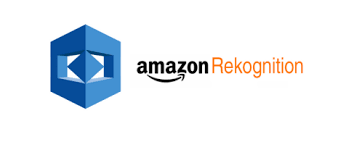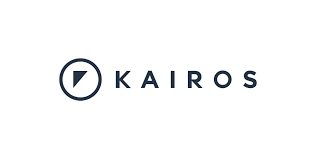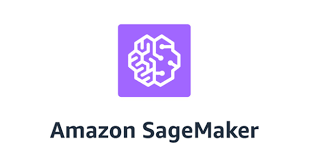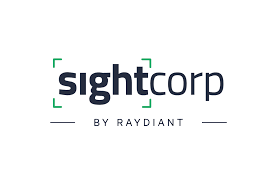In today's digital age, face recognition technology is becoming increasingly popular and widespread. This technology has various applications, from improving security measures to enhancing the customer experience in retail settings. With the help of artificial intelligence (AI), face recognition technology has made significant strides in recent years, offering greater accuracy and speed than ever before.
As the demand for AI-based face recognition tools continues to grow, an increasing number of businesses are turning to these technologies to streamline their operations and gain deeper insights into their customers and employees. In this blog, we will explore some of the best AI tools for face recognition, including their key features and benefits, and how they can help businesses achieve their goals. Whether you are looking to improve security, enhance marketing efforts, or optimize your operations, there is an AI-based face recognition tool out there that can help you achieve your objectives.
Amazon Rekognition

Amazon Rekognition is an AI-powered image and video analysis service that can identify and analyze objects, people, faces, and text within digital media. The tool is capable of recognizing and verifying individuals in real-time and can be used to automatically tag and organize visual content, allowing businesses to streamline their image and video management processes. Additionally, the tool provides sentiment analysis capabilities, enabling users to analyze and interpret the emotional tone of text within digital media.
Pros
Cons
Overall Rank
Microsoft Azure Face API

Microsoft Azure Face API is an artificial intelligence tool that allows developers to add facial recognition capabilities to their applications. With this API, developers can detect, analyze, and recognize human faces in images and videos with high accuracy. The Face API can identify a range of facial features such as emotions, age, gender, facial hair, and even facial landmarks. This AI tool can be integrated with various applications, such as security systems, marketing campaigns, and social media platforms to provide a personalized and customized experience to users.
Pros
Cons
Overall Rank
Google Cloud Vision API

Google Cloud Vision API is an artificial intelligence tool that provides image analysis and recognition capabilities. It allows developers to integrate features such as label detection, optical character recognition (OCR), face and landmark detection, and image sentiment analysis into their applications. With its ability to identify objects, faces, and other attributes in images, Cloud Vision API can be applied to a wide range of use cases, from automating image tagging to enhancing search functionality to improving accessibility for visually impaired individuals. Furthermore, the API's machine learning algorithms can continuously learn and improve over time, making it a powerful tool for businesses looking to extract insights from visual data.
Pros
Cons
Overall Rank
IBM Watson Visual Recognition

IBM Watson Visual Recognition is an AI-powered tool that allows users to analyze and classify visual content, including images and videos. This tool utilizes advanced machine learning algorithms to identify and extract objects, scenes, and other visual features from digital media. The AI model can be trained to recognize specific classes of objects, such as animals, vehicles, or landmarks, and can also identify specific attributes such as color, size, or texture. This tool is particularly useful for businesses and organizations that need to manage large volumes of visual content and want to automate the process of categorizing and tagging this content for search and retrieval.
Pros
Cons
Overall Rank
Face++

Face++ is an artificial intelligence tool designed for facial recognition and analysis. Developed by Megvii Technology, this tool uses deep learning algorithms to identify and analyze various facial attributes, such as gender, age, and emotions, from images and videos. Face++ has been widely used in various industries, including security, retail, and finance. In the security industry, it is used to enhance public safety by identifying potential threats and suspects. In the retail industry, it helps businesses to personalize their services and improve customer experiences. Face++ also offers an easy-to-use API that enables developers to integrate facial recognition and analysis capabilities into their applications.
Pros
Cons
Overall Rank
Kairos Face Recognition API

Kairos Face Recognition API is an advanced artificial intelligence tool that can identify and verify individuals through their facial features. This tool uses deep learning algorithms to analyze various aspects of a face such as its shape, contours, and patterns to create a unique facial signature for each individual. It can be used for a variety of purposes, from enhancing security systems to personalized advertising and customer service. The Kairos Face Recognition API has a high accuracy rate and can identify individuals in real-time even in crowded or complex environments. It also has a user-friendly interface, making it easy for developers to integrate the API into their applications.
Pros
Cons
Overall Rank
Luxand FaceSDK

Luxand FaceSDK is an AI-powered facial recognition and analysis tool that enables developers to integrate advanced face detection, recognition, and tracking capabilities into their applications. With its easy-to-use API, developers can quickly create robust facial recognition applications for a variety of use cases such as identity verification, access control, and personalized user experiences. Luxand FaceSDK also offers advanced features such as facial landmarks detection, emotion recognition, and age and gender estimation, which can further enhance the functionality and accuracy of facial recognition applications. Additionally, it supports multiple programming languages and platforms, making it a versatile tool for developers.
Pros
Cons
Overall Rank
OpenCV Face Recognition

OpenCV Face Recognition AI tool is a powerful technology that allows computers to recognize human faces in images and videos. OpenCV is an open-source computer vision library that provides a set of algorithms for image processing and computer vision tasks. Using OpenCV's face recognition algorithms, developers can create applications that can identify individuals in real-time video streams or static images. The technology works by extracting facial features from an image and comparing them to a database of known faces to identify a match. With its advanced capabilities, OpenCV Face Recognition AI tool is used in a variety of applications, including security systems, access control, and personalized marketing.
Pros
Cons
Overall Rank
PyTorch

PyTorch is a widely used open-source machine learning framework that enables developers and researchers to build and train artificial neural networks with ease. One of the key advantages of PyTorch is its dynamic computation graph, which allows for flexible and efficient model building. Additionally, PyTorch has a user-friendly interface and provides access to various pre-trained models, making it ideal for rapid prototyping and experimentation. PyTorch also offers a strong community and extensive documentation, making it easy to find help and resources when needed. With its powerful features and ease of use, PyTorch is an excellent tool for developing cutting-edge AI applications.
Pros
Cons
Overall Rank
TensorFlow

TensorFlow is an open-source machine learning library that has gained immense popularity in the field of artificial intelligence. It was developed by Google Brain Team and is widely used for building deep learning models, neural networks, and other machine learning applications. TensorFlow provides a flexible and efficient platform for creating and training complex machine learning models, which can be run on a variety of hardware and operating systems. It supports a wide range of programming languages, including Python, C++, and Java, making it accessible to developers with different coding backgrounds. Additionally, TensorFlow has a vibrant community of users who contribute to the development of the library by creating extensions and plugins.
Pros
Cons
Overall Rank
DeepFace

DeepFace is an artificial intelligence tool developed by Facebook's AI research team that can recognize human faces with high accuracy. It uses a deep learning algorithm to map facial features and create a 3D model of a face, allowing it to identify faces from different angles and lighting conditions. DeepFace has been trained on a massive dataset of over 4 million images, making it one of the most advanced facial recognition systems in the world. It has a wide range of potential applications, from security and surveillance to photo tagging and video analysis.
Pros
Cons
Overall Rank
Facebook DeepFace

Facebook's DeepFace AI tool is a facial recognition system that is capable of identifying individuals in photographs with an accuracy rate of 97.35%. The system uses a neural network with 120 million parameters to map and analyze facial features, such as the distance between the eyes, the shape of the nose, and the contours of the face. This technology has many potential applications, such as improving security systems, assisting law enforcement, and simplifying the photo tagging process on social media platforms. However, there are also concerns about privacy violations and the potential for misuse of this technology.
Pros
Cons
Overall Rank
Amazon SageMaker

Amazon SageMaker is a powerful machine learning tool designed for developers and data scientists to build, train, and deploy machine learning models quickly and efficiently. With SageMaker, users can easily create machine learning algorithms and train models using their own data or pre-built algorithms. The platform also includes automatic model tuning, which helps optimize hyperparameters for better accuracy and performance. Additionally, SageMaker offers easy integration with other Amazon Web Services, such as S3, EC2, and Lambda, making it a comprehensive machine learning solution for businesses and individuals alike.
Pros
Cons
Overall Rank
Clarifai

Clarifai is an AI tool that offers a wide range of computer vision and natural language processing capabilities, including image and video recognition, visual search, content moderation, and sentiment analysis. It utilizes deep learning algorithms to recognize and categorize images and videos with high accuracy, making it an ideal tool for businesses that require automated image and video analysis at scale. Clarifai's API is easy to use, and it supports a variety of programming languages, making it accessible to developers of all levels. With its powerful machine learning capabilities and intuitive interface, Clarifai is a valuable tool for businesses looking to streamline their image and video analysis processes.
Pros
Cons
Overall Rank
Sightcorp Face Analysis

Sightcorp Face Analysis AI tool is an innovative technology that utilizes artificial intelligence to analyze facial expressions and emotions in real-time. This tool provides businesses with valuable insights into their customers' behavior and helps them make data-driven decisions. Sightcorp's technology is built on deep learning algorithms that are capable of detecting emotions such as joy, anger, surprise, and sadness, among others. Additionally, the tool can provide age and gender estimates, head pose analysis, and gaze tracking, allowing businesses to tailor their marketing strategies to specific demographics and interests. Overall, Sightcorp Face Analysis AI tool is a powerful and insightful tool for businesses looking to enhance customer experiences and improve their overall operations.
Pros
Cons
Overall Rank
In conclusion, the field of AI-based face recognition technology is advancing rapidly, with an increasing number of tools and platforms becoming available for users to leverage. These tools are offering unprecedented levels of accuracy and speed, making them valuable for a wide range of applications, including security, retail, and marketing. Among the best AI tools for face recognition are Amazon Rekognition, Microsoft Azure Face API, and Google Cloud Vision API. Each of these tools offers unique features and capabilities that can be customized to meet specific business needs. Overall, the increasing availability of AI-based face recognition technology is making it easier for businesses to leverage the power of computer vision to enhance their operations. As the technology continues to develop, we can expect even more sophisticated tools and platforms to emerge, enabling businesses to gain deeper insights and more valuable intelligence from their visual data.
